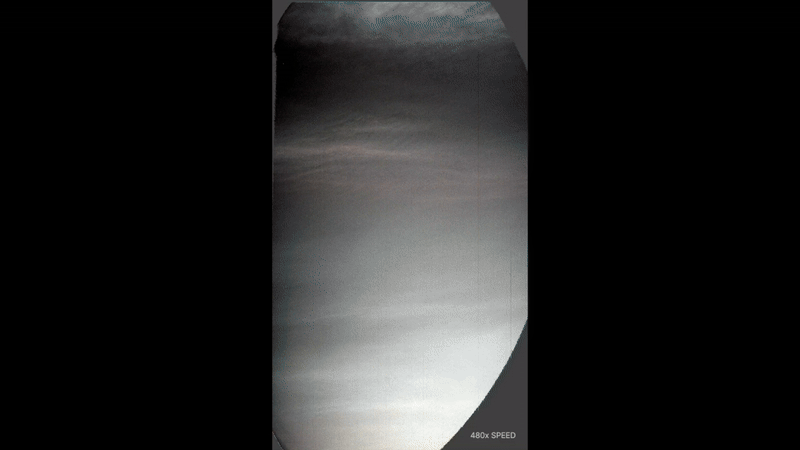
Curious about what Martian clouds look like? A captivating new video, created from images taken by NASA’s Curiosity rover, provides an intriguing view. This footage showcases delicate clouds in hues of red and green gracefully moving across the Martian atmosphere, creating striking patterns reminiscent of those seen on Earth. Exploring the formation and characteristics of these clouds can enhance scientists’ understanding of their role in Mars’ climate system.
The footage, which was taken on January 17 using one of the two onboard cameras of the Curiosity rover, features “noctilucent” clouds — a unique type that remain illuminated by sunlight high above the Martian surface, even during nighttime. The images were captured over a span of 16 minutes and accelerated about 480 times to produce the striking video, as detailed in a statement from NASA’s Jet Propulsion Laboratory, the creator of Curiosity and the lead for the mission.
These twilight clouds consist of carbon dioxide ice, commonly referred to as dry ice, and can be observed in the latest images. They float approximately 37 to 50 miles (60 to 80 kilometers) above the Martian surface, where temperatures are cooler, allowing carbon dioxide in the planet’s atmosphere to condense into cloud formations. Some ice crystals appear to descend toward the planet, creating thick, white plumes before evaporating around 31 miles (50 kilometers) high due to rising warmth.
This is the fourth Mars year that Curiosity has recorded the presence of these clouds, which typically emerge in early fall within the planet’s southern hemisphere, as noted in the JPL announcement. The phenomenon was first documented in 1997 by NASA’s Pathfinder mission from a location just north of Mars’ equator.
“I’ll always recall seeing those shimmering clouds for the first time, initially thinking it was some sort of color glitch,” explained Mark Lemmon, an atmospheric scientist at the Space Science Institute in Colorado, who authored a paper summarizing the first two seasons of twilighting cloud observations by Curiosity. “Now it’s so anticipated that we can plan our imaging since the clouds consistently appear around the same time each year.”
Last September, researchers revealed the most comprehensive cloud map of Mars, assembled from two decades of observations by the European Space Agency’s Mars Express orbiter. This map catalogs an impressive array of cloud patterns on Mars, including some that are unlike anything seen on Earth.
“The clouds on Mars rival the diversity and intrigue of those found in Earth’s atmosphere,” stated Daniela Tirsch, a planetary geologist at the German Aerospace Center, who contributed to the catalog.
However, the reason twilight clouds remain unobserved in other areas of Mars continues to puzzle scientists like Lemmon. For instance, the Perseverance rover, which landed in Jezero Crater in 2021, has yet to detect any twilight clouds, being situated in the northern hemisphere, which is farther north than Pathfinder’s region. Similarly, Curiosity did not observe these clouds until 2019, nearly seven years following its landing in Gale Crater, just south of Mars’ equator.
“The condensation of carbon dioxide into ice was unforeseen in this context, suggesting some cooling is occurring to facilitate that process,” Lemmon remarked.
It’s possible that specific regions of Mars are more favorable for forming these clouds, particularly places where atmospheric ripples known as gravity waves lower the temperatures sufficiently to allow carbon dioxide to freeze and shape the subsequent clouds.
“Nonetheless,” Lemmon added, “our understanding of Martian gravity waves remains incomplete, and we still don’t know why twilight clouds develop in some locations but not in others.”









